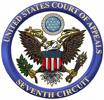Seventh Circuit Case of the Week: Sentencing Judges, You’ve Got Some ‘Splaining to Do

David Morrow was sentenced to an eye-popping 504 months in prison for conspiring to sell crack cocaine. This extraordinary punishment was ordered despite the fact that Morrow was diagnosed with diabetes in 2006 and had a leg amputated a few months later. At sentencing, counsel identifed Morrow’s health concerns as a mitigating factor, as did the presentence investigation report prepared by a probation officer. Yet, the sentencing judge said nothing about Morrow’s health problems in imposing a sentence twelve years above the minimum recommended by the federal sentencing guidelines.
Not so fast, said the Seventh Circuit last week in United States v. Harris (Nos. 08-1192, 08-1543, & 08-1694). The court, per Judge Williams, vacated Morrow’s sentence because the sentencing judge failed to address the health argument, which was not an argument “clearly without merit”:
[W]e cannot assure ourselves that the district court weighed Morrow’s health complications against other factors when it imposed the 504-month sentence, as we see no indication that the district court considered it. We therefore remand Morrow’s case for resentencing.
In emphasizing the importance of thorough sentence explanations, particularly to demonstrate that the defendant’s arguments for lenience were at least considered, Harris indicates (contrary to an earlier prediction of mine) that the Seventh Circuit’s important decision in United States v. Cunningham, 429 F.3d 673 (7th Cir. 2005), is still alive and well. Sometimes it is nice to be proven wrong.

 In my third year of law school, the speaker at our law review banquet was a Boston Globe reporter who talked about a book he was writing on the Robert Bork confirmation battle. I didn’t pay much attention to his speech, other than to complain loudly to all within hearing that a judge would have been a much more prestigious invitee than a reporter. Ethan Bronner’s book, Battle for Justice, came out the following year and has since been recognized as a classic treatment of the modern Supreme Court nomination process.
In my third year of law school, the speaker at our law review banquet was a Boston Globe reporter who talked about a book he was writing on the Robert Bork confirmation battle. I didn’t pay much attention to his speech, other than to complain loudly to all within hearing that a judge would have been a much more prestigious invitee than a reporter. Ethan Bronner’s book, Battle for Justice, came out the following year and has since been recognized as a classic treatment of the modern Supreme Court nomination process.